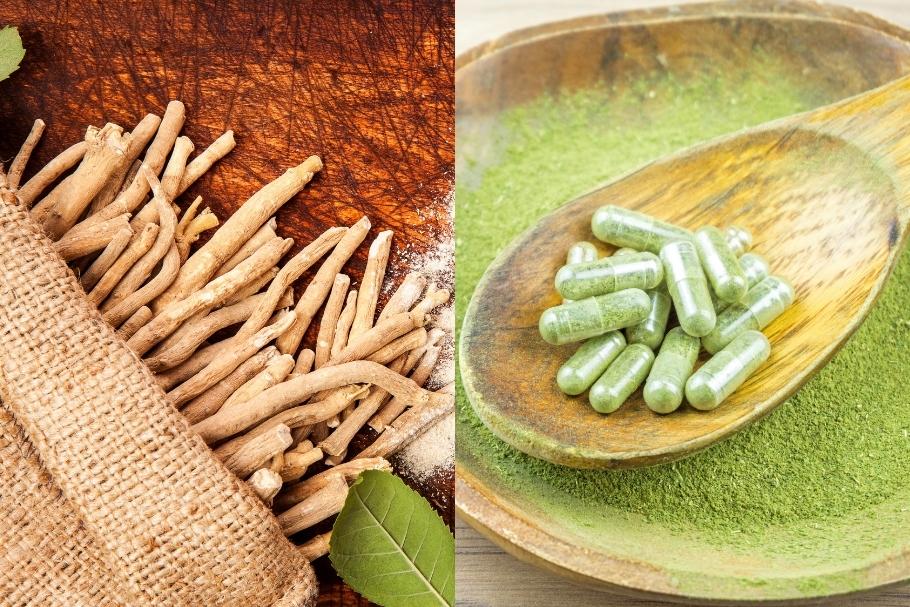

Kratom and ashwagandha have been used for centuries in different parts of the world. But only recently have they started to gain recognition in the Western world, with more and more users discovering their supposed benefits.
But while some users believe they work synergistically, others prefer using them separately. In this guide, we’ll explore the properties, similarities, differences, and potential interactions between these two popular herbs.
So sit back, relax, and discover the potential of kratom and ashwagandha.
Disclaimer: This content is for informational purposes only and does not constitute medical or health advice. Always consult a healthcare professional before using new substances or combinations.
Kratom vs. Ashwagandha
Let’s start with the basics, shall we? Here’s a deeper dive into kratom and ashwagandha, their similarities, differences, and potential effects.
What Is Kratom?
Kratom (Mitragyna speciosa) is a tropical tree native to Southeast Asia. Traditionally, its leaves were chewed or brewed into tea. Today, kratom is available in various forms, including powders, capsules, and extracts.
The active compounds in kratom include mitragynine and 7-hydroxymitragynine, which interact with receptors in the brain. Those compounds are called alkaloids, and they give kratom its unique set of properties, which can range from stimulating to relaxing, depending on the dosage and particular strain.
However, it’s important to note that scientific research on kratom remains limited, and its safety profile is still under review.
What Is Ashwagandha?
Ashwagandha (Withania somnifera) is a traditional herb from the Indian subcontinent, also known as “Indian ginseng” or “winter cherry.”
Unlike kratom, ashwagandha's supposed effects are typically more gradual, and users report benefits like reduced stress and improved sleep over time.
The herb owes its effects to active compounds known as withanolides. They are believed to influence stress responses and overall well-being, though, as with kratom, more research is needed to confirm their long-term effects and interactions.
Ashwagandha & Kratom | Comparison Table
| Factor | Kratom | Ashwagandha |
|---|---|---|
| Botanical Name | Mitragyna Speciosa | Withania Somnifera |
| Plant Family | Rubiaceae (Coffee Family) | Solanaceae (Tomato Family) |
| Part Used | Leaves | Roots |
| Active Ingredients | Mitragynine & Related Alkaloids | Withanolides (Alkaloids) |
| Origin | Southeast Asia | Indian Subcontinent |
| Legality | Legal in most places | Legal worldwide |
| Taste | Bitter & grassy | Bitter, pungent, & sweet |
Can You Combine Kratom and Ashwagandha?
Some users experiment with combining kratom and ashwagandha, believing the two herbs complement each other. Ashwagandha is thought to support stress management, while kratom’s effects vary depending on the dose.
But can you combine the two? Anecdotal reports from users suggest that this combination can provide balanced effects.
However, there’s no scientific evidence to confirm whether the mix of kratom and ashwagandha can be effective and, more importantly, safe.
For instance, ashwagandha may influence enzymes like CYP3A4, which are involved in metabolizing kratom. This interaction could alter the effects of kratom or even increase the risk of side effects.
Again, though, more research is needed to confirm this.
Potential Risks and Safety Considerations
- There’s still not enough research on how ashwagandha and kratom interact together. Combining them could result in unexpected effects.
- Users should be aware of potential side effects such as nausea, dizziness, or overstimulation, especially at higher doses.
- Limited scientific studies mean there is little information about long-term use or potential risks associated with mixing kratom and ashwagandha.
Final Thoughts
Kratom and ashwagandha are intriguing herbs with unique properties. However, combining them should be approached with caution.
While some users report positive experiences, the lack of scientific research makes it essential to prioritize safety and moderation. The best practice is to always source high-quality products from reputable vendors and consult a healthcare provider.


